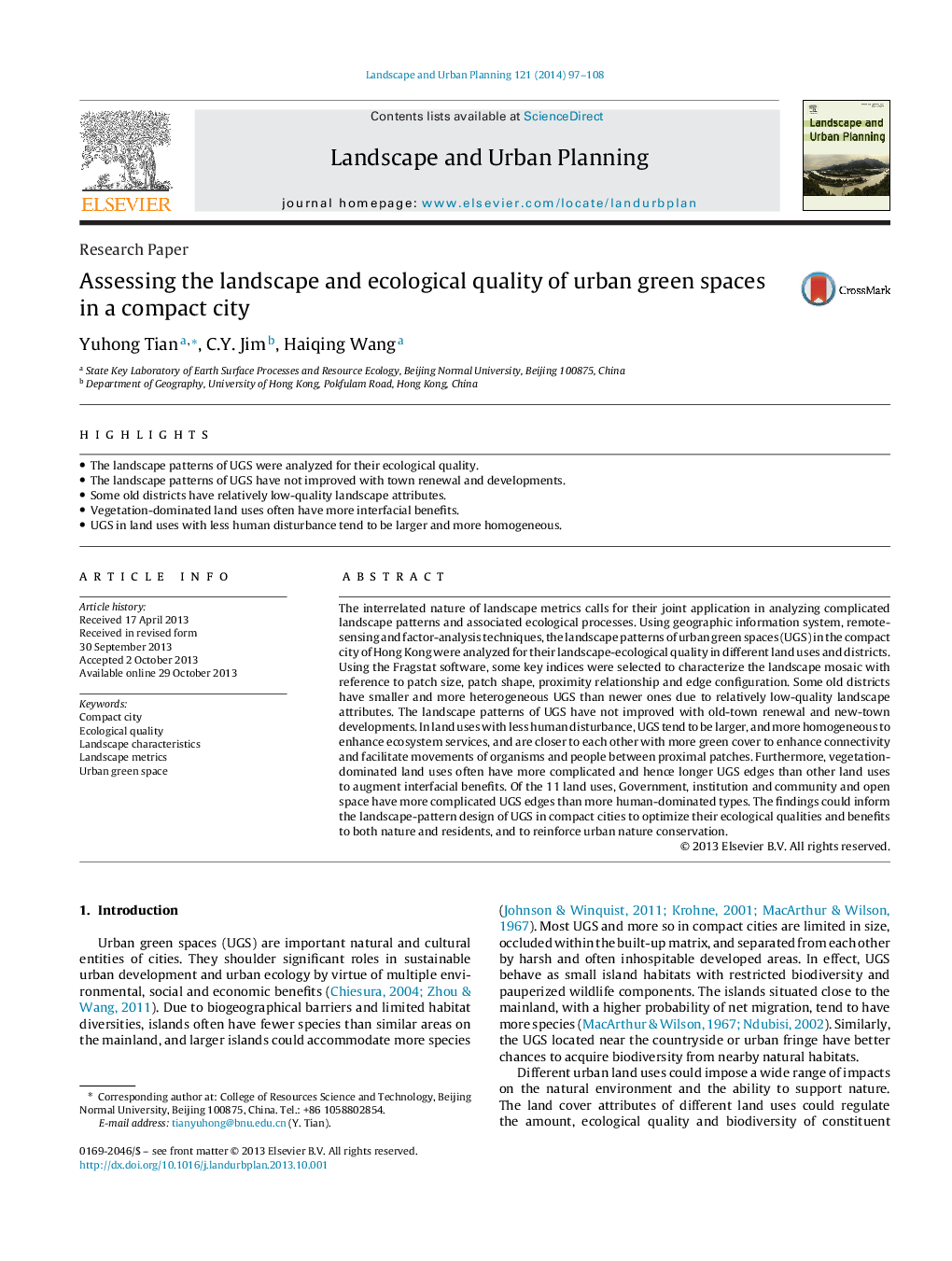| کد مقاله | کد نشریه | سال انتشار | مقاله انگلیسی | نسخه تمام متن |
|---|---|---|---|---|
| 1049247 | 1484637 | 2014 | 12 صفحه PDF | دانلود رایگان |
• The landscape patterns of UGS were analyzed for their ecological quality.
• The landscape patterns of UGS have not improved with town renewal and developments.
• Some old districts have relatively low-quality landscape attributes.
• Vegetation-dominated land uses often have more interfacial benefits.
• UGS in land uses with less human disturbance tend to be larger and more homogeneous.
The interrelated nature of landscape metrics calls for their joint application in analyzing complicated landscape patterns and associated ecological processes. Using geographic information system, remote-sensing and factor-analysis techniques, the landscape patterns of urban green spaces (UGS) in the compact city of Hong Kong were analyzed for their landscape-ecological quality in different land uses and districts. Using the Fragstat software, some key indices were selected to characterize the landscape mosaic with reference to patch size, patch shape, proximity relationship and edge configuration. Some old districts have smaller and more heterogeneous UGS than newer ones due to relatively low-quality landscape attributes. The landscape patterns of UGS have not improved with old-town renewal and new-town developments. In land uses with less human disturbance, UGS tend to be larger, and more homogeneous to enhance ecosystem services, and are closer to each other with more green cover to enhance connectivity and facilitate movements of organisms and people between proximal patches. Furthermore, vegetation-dominated land uses often have more complicated and hence longer UGS edges than other land uses to augment interfacial benefits. Of the 11 land uses, Government, institution and community and open space have more complicated UGS edges than more human-dominated types. The findings could inform the landscape-pattern design of UGS in compact cities to optimize their ecological qualities and benefits to both nature and residents, and to reinforce urban nature conservation.
Journal: Landscape and Urban Planning - Volume 121, January 2014, Pages 97–108
